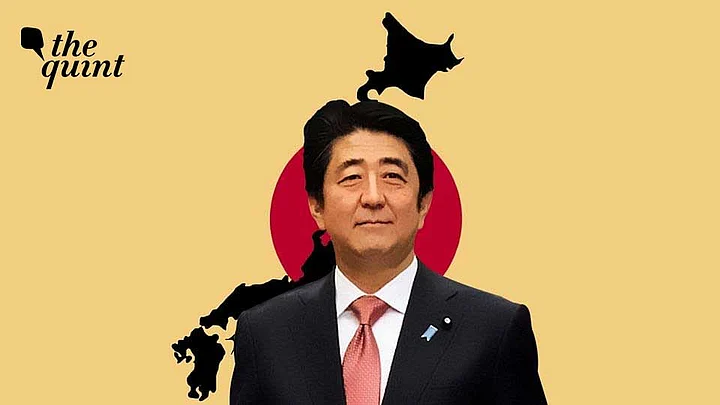The world was shocked to a halt as news emerged of an assassination attempt on former Japanese Prime Minister Shinzo Abe in the city of Nara on Friday, 8 July, while he was delivering a speech.
The country waited with bated breath as doctors treated the longest-serving Japanese PM over the next few hours, as prayers from all over the world poured in. Unfortunately, Abe could not be saved and breathed his last in the hospital. The leader is the fourth Japanese prime minister to be assassinated.
What further shocks about Abe's assassination is that Japan is a country with some of the most stringent gun-control laws, with deaths caused by firearms in single figures annually.
Even getting a license for a gun is an arduous process for the country's citizens, that requires them to first get a shooting association's recommendation and then undergo strict police checks.
As news about the killer, 41-year-old Yamagami Tetsuya, emerged, it came to be known that he had used a homemade weapon to shoot at Abe, as per NHK.
15 Assassinations/Attacks on Japanese Politicians, Including 5 Sitting PMs, Over the Last 100 Years
While gun use is extremely limited among civilians in the country, there have been as many as 15 attempts to assassinate Japanese politicians in the past using different means. Out of the 15 assassination attempts, more than half of them were successful, with nine politicians, including sitting prime ministers, succumbing to their injuries.
Most of the attacks have been carried out by members of right-wing groups.
1921: Takashi Hara, who was the first "commoner" to assume the PM's post in the country, was stabbed to death by a railway worker at Tokyo Station.
1930: Nine years later, the then PM Osachi Hamaguchi was shot at in the same railway station and died of his injuries after a few months.
1932: Premier Tsuyoshi Inukai was shot dead in his office by a group of armed naval officers, in what came to be known infamously as the "May 15 Incident."
1936: Two former PMs, Saito Makoto and Takahashi Korekiyo, were killed during a military revolt against the ruling establishment.
1960: The then PM and Abe's maternal grandfather Nobusuke Kishi was attacked by a knife-wielding member of a right-wing group. Fortunately, Kishi survived the assassination attempt as the knife missed his major arteries. In the same year, a leader of the Japan Socialist Party named Inejiro Asanuma was stabbed to death by a 17-year-old right-winger.
1990: Former Labour Minister Hyosuke Niwa was killed after being attacked by a mental patient. Nagasaki's mayor Hitoshi Motoshima, on the other hand, sustained serious injuries after being shot at by a member of a right-wing group.
1992: In yet another incident of right-wing violence, the then vice president of the Liberal Democratic Party and Deputy PM Shin Kanemaru was shot at during a speech. Fortunately, he escaped from the attack unhurt.
1994: Another right-winger tried to kill the then prime minister Morihiro Hosokawa, but failed in his attempt.
1996: A mayor of Japan's Mitake, considered to be quite outspoken, was attacked in his residence by members of an organised crime group and sustained serious injuries.
2002: Democratic Party legislator Kouki Ishii was stabbed near his home by a right-winger and succumbed to his injuries.
2007: Another mayor of Nagasaki by the name of Iccho Itoh was assassinated by a representative of an organised crime group.
2022: Former PM Shinzo Abe was shot dead while delivering a speech in the city of Nara by an assassin wielding a homemade gun.
(With inputs from NHK and Japan Times.)
(At The Quint, we question everything. Play an active role in shaping our journalism by becoming a member today.)
